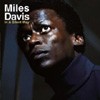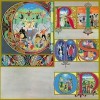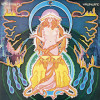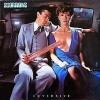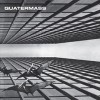Look what turned up in someone's attic! Archival live recording from Nottingham University on 1/24/76. Nothing unusual about the set but its a fine recording and a good representation of the band at their peak."Well, it is 2006 and here we have a new release by Renaissance, a band central to the first wave of Prog music in the 1970s with their classically orientated arrangements, distinctive orchestrated sound, and of course, the unmistakeable vocal talents of Annie Haslam. This single CD is from a recording made on Saturday 24th January 1976 by Realsound Mobile at a concert in the University of Nottingham, England and features just 6 of their best known songs played by the prime 70s line-up.It should be noted that this gig was played just seven months after their triumphant 3 night stint at the Carnegie Hall, complete with orchestra, which resulted in the highly respected 2CD set 'Live At Carnegie Hall' - all of these 6 tracks are also on that Carnegie Hall set, but this time they are played without an orchestra. This is what makes this CD so interesting - to hear how the same songs sound within a contemporary timeframe but without the orchestral arrangements.The origin of this recording has not been divulged other than what I have already mentioned. Clearly these are tapes that have been lying around for 30 years, but we are not told whether this CD has been mixed from original professionally recorded multi-track tapes or some other source. I suspect the latter, because the sound quality isn't great, specifically it has a stereo sound stage compressed toward the centre, something which would have been fixed had it been mixed from multi-track. The sound isn't bad - I have heard much much worse - but it could be a lot better, and it doesn't approach the clarity of the Carnegie Hall set. While the mid and upper registers are clear enough with good separation though somewhat subject to acoustic echo (especially some 'double hits' on snare drum), the lower frequencies wallow around in a muddiness that tends to swamp any intricate delicacies of bass guitar and drum kit when playing in ensemble. [I am reminded of a bootleg - a very high quality one maybe - but the sound and ambience is reminiscent of an audience recording, except there is not the usual amount of audience noise you would expect with a bootleg.]The quality of recording is excellent: there is no distortion; no drop-outs or glitches; noise (hiss) is only apparent during the very quietest passages; and all the instruments and voices sound solid. Audience noise is kept to a minimum with just the usual respectful applause: the exception being during a couple of very quiet moments when you can hear some distant chatter (maybe at the bar?), but this is not enough to interfere in any way. Generally, the mix is good, though in addition to the already mentioned problems, the piano (the main lead instrument) is a little too forward for my liking (and in any case sounds a bit odd) while the guitar and drumkit are often lost in the murk. Compared to the lush professional smoothness of the Carnegie set this album feels much more rough and raw, a more intimate recording from a smaller venue.The performers do their jobs well as always. Annie sounds wonderful, with just a little processing to give her voice more presence. She certainly hits all those high notes easily - I wouldn't have liked to stand next to her when belting out that final ear-shattering note near the end of Ashes Are Burning! John Tout on keyboards is the lead instrumentallist here, mainly on piano which works well where the part was created for piano (eg Prologue) but falls a little flat otherwise (eg Ashes Are Burning). He copes with the Song Of Scheherazade surprisingly well - by which I mean he does a good job of persuading the listener that you don't really miss the full orchestra backing! Jon Camp is an important and often overlooked ingredient in the classic Renaissance sound, and sadly he doesn't get enough opportunities to shine, but his bass playing is as faultless as always. Terry Sullivan's drumming and percussion is too often swamped in the mud, but he seems to be as much of a rock as usual. Michael Dunford tends to come and go: his delicate acoustic guitar is all too often swamped during the louder sections, which is a pity, but it is nice to hear his voice so clearly, both while singing solo and in harmony with Annie.The performances are what you might expect - imagine these songs on the Carnegie set but in an intimate setting without orchestra and you won't go far wrong as they are performed much the same, but with Tout filling in some of the empty spaces with synth washes and pads. Playing this album in isolation gives a great deal of pleasure and the songs sound natural and right in this environment. Even the Song Of Scheherazade, their orchestrated magnum opus, comes across very well indeed as the band pull together to generate a moving experience ........ that is, until you then hear the same song in all its orchestrated glory from Carnegie Hall (or, indeed, the original studio version) and suddenly you get the goose-bumps and realise there is no comparison! Good as this album is, it will inevitably be fated to be compared unfavourably to the Carnegie Hall performances. A particular example is the final track - Ashes Are Burning. The Carnegie Hall version is sublime and has me writhing is ecstacy - sadly this new version only has me writhing in .... well, almost boredom actually. From the mid-song instrumental jam onwards it is uninspired with a bit of bass, some synth and piano noodling, and, what is worse, there is no Hammond on this version! I am a sucker for that 3-note descending motif but without the Hammond it sounds quite ordinary, and Tout seems to have run out of ideas.This is not to say that this is a bad album. Far from it, it is a welcome and enjoyable addition to the collection of the Renaissance afficianado which gives a different slant on the material, and in much better quality than some of the extremely rough unauthorised recordings I have heard from this period. But neither is it essential, especially for those new to the band.One final point: it is nice to report that, for once, the record company - Major League Productions - have done a good job with the packaging. The inner booklet contains lots of photos of the band and tour memorabilia, proper credits, and some notes by Annie in which she reminisces on 'the old days' (eg how they used to stop off at a 'greasy spoon' motorway cafe in the middle of the night and she would always eat egg and chips etc)." - ProgArchives
$8.00



